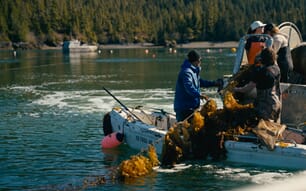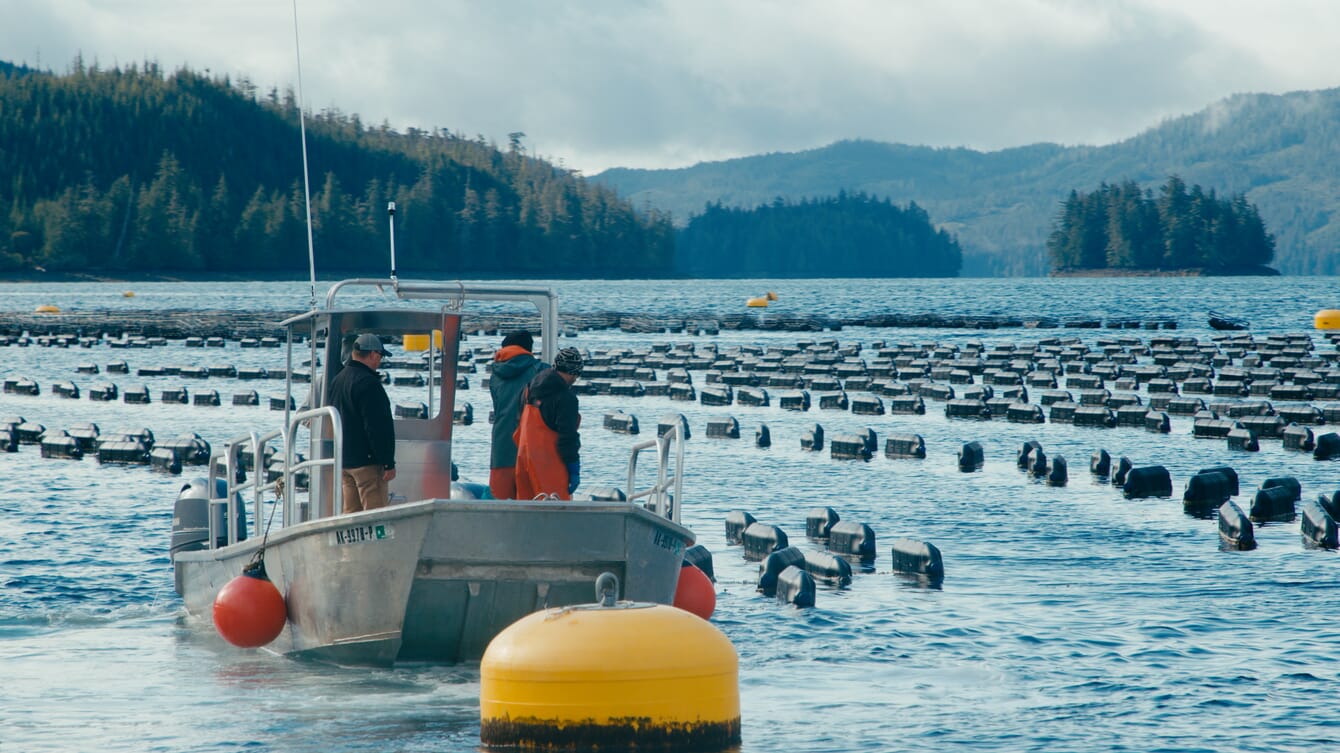
© The Fish Site / Hatch Innovation services
“You have to remember, we are the people of the tides: when the tide is out, the table is set. That’s what our elders used to say. We’ve been doing this for over 10,000 years now. It’s nothing new to us,” reflects Edward Douville.
As an indigenous leader and CEO of Shaan Seet, a native corporation, Douville’s heritage and livelihood are both firmly tied to the island’s natural resources. But, following the collapse of the logging industry at the end of the last century and the growing uncertainty that surrounds the once-thriving fishing sector, he admits that finding an industry that’s not purely extractive is long overdue.
And he believes that mariculture, which has recently been earmarked for a $49 million funding windfall from the Alaska Mariculture Cluster, might just fit the bill.
“We feel it is going to bring great ecological balance to our environment, help rebuild the oceans and set us on a more sustainable path in the future for fisheries in general,” Douville reflects.
While Prince of Wales might be the second largest island in Alaska, and the ninth largest in the world, it’s an unforgiving and expensive place to do business, due to its remote location, and environmentally friendly opportunities for its inhabitants are few and far between. However, Douville sees this changing, especially as a new generation of islanders come of age.
“A lot of them are going to choose this path [mariculture] because it's a much more sustainable path, that is good for our environment and our Earth,” he explains.
These are some of the reasons that Shaan Seet is planning a community-use mariculture processing facility, which Douville believes could also act as a wider mariculture hub for Southeast Alaska, but the precise details are still to be confirmed.
However, despite his conviction of the industry’s potential, and the fact that oysters have been farmed on the island since the mid-1980s, Douville admits that it’s taken time for many locals to see mariculture as a positive, or significant, force – perhaps in part due to the isolated locations of most of the farms.
As he reflects, at an early gathering led by local mariculture operators, buy-in from the audience was thin on the ground.
“It’s an industry we’re not familiar with. Because of that there’s going to be a good few sceptical people. And in the first few community meetings that was very apparent,” he reflects.
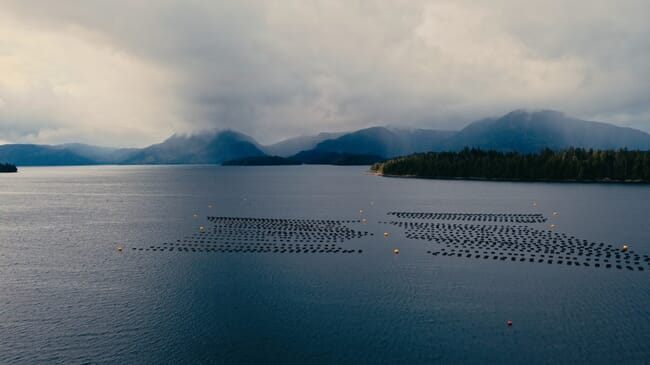
However, now that businesses like Seagrove – the island’s largest oyster and kelp producer – are now fully established and employing local people, more of the islanders are beginning to see mariculture’s potential.
“Come the third meeting, I think people really understood what we were going for, what is was going to mean for the community,” Douville reflects.
“Three or four years later, from what I can see, it’s only brought benefits to our community,” he adds.
A thriving oyster sector
Seagrove offers a tantalising glimpse of what can be achieved in mariculture by an ambitious individual, with meticulous planning skills and a fair amount of financial backing.
The individual in question, Markos Scheer, has dedicated nine years to building his business, starting with seaweed cultivation in 2019, and putting the first oysters in the water in 2023, after years spent raising his first and second material rounds of capital.
After considering raft-based culture, Scheer trialled a variety of alternative systems, ultimately deciding that he could benefit from looking further afield, and started to research and cherry-pick the best technologies and growing techniques from around the world. He finally decided that the OysterGro system for on water cultivation, which is based on strings of small floating cages, each holding 3,000 oysters in six bags, was the best suited to the demanding conditions at his lease, in Doyle Bay, on the west side of Prince of Wales Island.
Developed in New Brunswick, but not previously deployed in Alaska, the units can be flipped by boat – rather than by hand – to periodically expose the oysters to the air and kill off biofouling. Another element of the system that Scheer appreciates is that the movement of the raft in the waves effectively tumbles the oysters, giving them the deep cups desired by consumers, limiting the need for additional handling. He’s been impressed with the low mortality rates and favourable growth rates too.
“All the oysters are in the top foot of water, where the food is the most plentiful and the water the warmest,” he reflects.
Meanwhile the consistency of growth is another positive, compared to conventional rafts, where the more densely packed oysters tend to grow at different rates, depending on their location within in the matrix, as some parts of the raft are inevitably more exposed to the currents – and thus to the plankton that the oysters feed on – than others.
Scheer is so convinced by the system that he currently has 2.2 million oysters, and aims to increase this to 6 million in 2,000 cages when running at full capacity.
“I can run a farm with 6 million oysters with four to six people. That’s pretty remarkable. There’s a minimal amount of contact with the oysters – that’s also really good,” he observes.
As well as the production side, Scheer has also invested heavily in processing equipment, recently investing $160,000 on an SED grader – thanks in part to help from the Alaska Agriculture Revolving Loan Fund. The grader, he says, can sort more oysters in an hour than a traditional farm using basic graders could do in 2-3 days, with the option of sorting them into six different sizes, ensuring that a range of customer specifications can be met.
Other technologies Scheer’s working with include software from OceanFamr, which helps him keep tabs on when each of his oyster rafts was last checked and their status at that time, as well as hardware from BlueTrace, which ensures harvest-to-market traceability of every oyster.
This last technology dovetails neatly with his mission to ensure that Alaskan oysters – which already fetch premium prices – can continue to build their reputation for quality. And he’s also working with SeaGrant to set a unified grading standard for the state’s 27 oyster producers, in order to create a premium brand.

The building was mainly constructed by Jimmy Greeley, who runs the company with his partner, Katie Bode © The Fish Site / Hatch Innovation Services
Tommaso Shellfish
While Seagrove’s lofty ambitions might grab more headlines, Tommaso Shellfish, operated by Jimmy Greeley and Katie Bode, has a more local, but no means less valid, outlook and approach.
The epicentre of the couple’s business is a charming timber floathouse, largely built by Jimmy, which contains their processing unit and provides the anchoring system for the oyster rafts that house the 100,000 or so oysters that he grows each season, although he’s currently looking into investing in a surface culture system too – potentially using this for the smaller oysters, then finishing them in the rafts.
Greeley has been operating as an independent farmer for a decade, inspired by his father, who spent his weekends travelling up from Seattle to work his oyster lease. Katie joined the family, and the family business, seven years ago and hasn’t looked back.
Tommaso have ambitions of their own, and are on the cusp of setting up a cold storage and processing facility 4 miles from the farm, helping to preserve the quality of their oysters, pave the way for expansion and cut out a 40 mile commute to their current unit.
What’s more, Greeley is open to sharing it with the other members of the four-farm co-op, which he's a part of. Tomasso harvest around 400 dozen oysters weekly, and mainly sell locally, although – being on the island – locally still involves the need for airfreight.
Like Scheer, Greeley has immense pride in his oysters and would like to see Alaskan oysters differentiated by region on the menus of restaurants in seafood meccas like Seattle. He’s also keen to ensure that comparatively small scale farms have a future as he believes smaller farmers are able to produce exceptional oysters.
“I’d like to see a few more people with my sized farm to maintain the price and quality of the product,” he reflects.
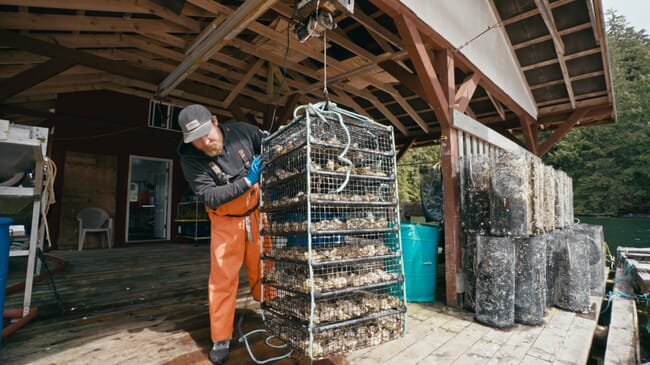
© The Fish Site / Hatch Innovation Services
Spat supply
Both Greeley and Scheer buy their oyster spat from fellow islander, Eric Wyatt, a fisherman who established a sideline in oysters back in 2004, with the formation of the Bluestarr Oyster Co. While he initially focused on grow-out, he has also operated floating upweller systems (FLUPSYs) since 2013. This has allowed him to grow on oyster spat from hatcheries to a size where they should be robust enough to be transferred to farmers’ grow-out systems – thereby helping to catalyse the growth of the island’s entire oyster sector.
It’s a business that his fishing helped to finance and Wyatt explains that he buys most of his spat from Hawaiian Shellfish, who have recently started to offer 4 mm spat, which are much more robust, and therefore well suited to Alaska’s extreme weather, than the 3 mm size favoured by oyster nurseries elsewhere.
According to Wyatt, he recently invested in a $100,000 screening machine to ensure all the oysters he sells – as well as those he keeps for his own grow-out operations – will be viable. While he currently uses rafts for ongrowing, he plans to invest in a new FlipFarm system from New Zealand, which is similar to the OysterGro system favoured by Scheer.
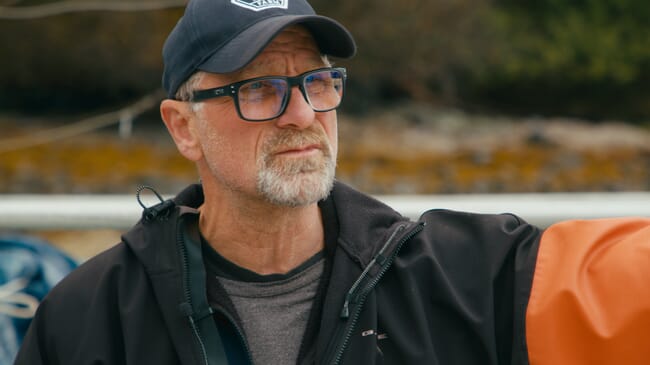
Wyatt on-grows oyster spat in a FLUPSY to a size where they will be able to survive in ongrowing systems
The rise of kelp farming
While there are now a number of established oyster businesses on Prince of Wales Island, seaweed – namely, a range of kelp species – is now being seen as having great potential too.
Most recently, Kelp Blue was awarded a lease for a 121 acre giant kelp farm in Sea Otter Sound, which they aim to transform into seaweed extracts and other value-added products.
The multinational startup will no doubt be looking closely at Scheer, who began to grow several kelp species, once he was convinced that his oyster production system was stable.
Along the way he’s been working closely with Oceans Alaska, a non-profit also based on the island, which has dedicated the last eight years to developing a kelp and shellfish hatchery to provide the vital first links in the value chain.
In order to achieve this, sorus (reproductive tissues) are gathered from close to the relevant farm in August, then stimulated in the lab to produce seed spores, which then settle on the twine, which is ready for growout after 6-8 weeks in the lab, so on-farm seeding can take place between October and December.
The facility then switches to growing oyster seed each new year, and have also undertaken trials with other species, including sea cucumbers.
Room for improvement
Although the Oceans Alaska hatchery is currently capable of seeding an impressive 200,000 feet of line per year, Scheer – who has visited established kelp producers in South Korea – is well aware that there’s scope for considerable improvements and upscaling in the West.
“We’re not commercial scale in the real sense of the word and I’m not aware of anyone in the Western seaweed industry that is,” he observes.
According to Scheer, unit economics for seeding need to be reduced from around $0.20 per foot of line to $0.01- 0.02 per foot – a figure that is currently achieved Asia.
While various techniques are being trialled, he thinks that gametophyte-based direct line seeding currently looks the most promising.
“Gametophyte seeding has a lot of potential because you can hold an inventory and produce it as you need the seed, which gives more consistent stock production, and a lot more control about when you put it in the water,” he explains.
However, this process is still at a prototype stage in the West, with Ocean Rainforest, the largest kelp producer in the Faroe Islands, looking closest to a breakthrough.
“It’s potentially scalable but has not been scaled,” Scheer notes.
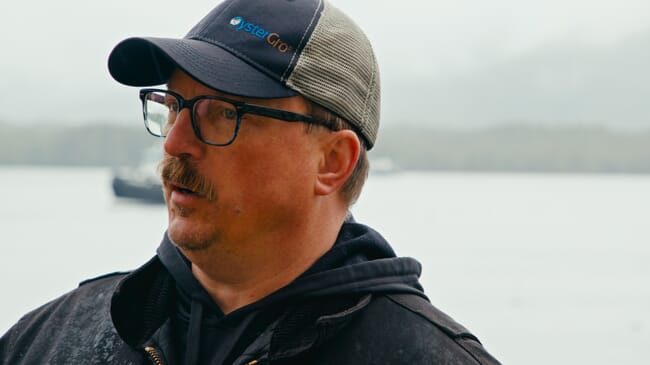
© The Fish Site / Hatch Innovation Services
Building an appetite for kelp
Despite the clear limitations in Western growing techniques, Scheer points out that the other end of the value chain is even more of a bottleneck.
“Our ability to produce seaweed is far higher than the ability of the market to consume it,” he observes.
“We’re at maybe 10 percent of our current capacity and we could expand 10- or 20-fold in a year if the there was the demand, even using current technology,” he adds.
As a result, Scheer is a strong advocate for market development, potentially through a national body tasked with building brand recognition, especially once kelp can be grown efficiently and consistently. And he cites the example of kale, which was a niche produce 20 yrs ago, but has since evolved into a multi-million dollar industry. He also notes that reducing production costs will help to open up new markets,
“We need to reduce our cost of production by at least 80 percent,” he argues.
Furthermore, Scheer would like to develop, or at least have access to, a local way to add value to the kelp.
“We’ve got to be producing value-added products at the source. I don’t think the industry is sustainable if we’re doing raw material production and moving it somewhere else to do the value,” he reflects.
While there are many ways to add value to raw seaweed, the most important first step is to ensure the freshly harvested crop doesn’t degrade, and Scheer would like to establish a drying facility on the island.
“We’re adapting by utlising existing seafood processing capacity, which can do some things well. But doing seaweed processing in the form it needs to be to meet market demand needs processing technology,” he observes.
To sum up
While it’s clear that Prince of Wales Island is a challenging place to earn a living and that there are plenty of bottlenecks that need to be cleared before the island’s mariculture sector can achieve its full potential, it’s also clear that there’s momentum behind the individuals and organisations that are leading the mariculture charge.
In the words of Edward Douville: “We have a high cost of doing business, but we also have some of the best people in the world for what we're doing out here. We have the most knowledgeable people from the industry and with the local native people, we're taking years and years of traditional and ecological knowledge and putting it into play.”
*This article is part of a project commissioned by the SEC to highlight the region's mariculture sector. To learn more about the sector visit alaska.seaweedinsights.com




